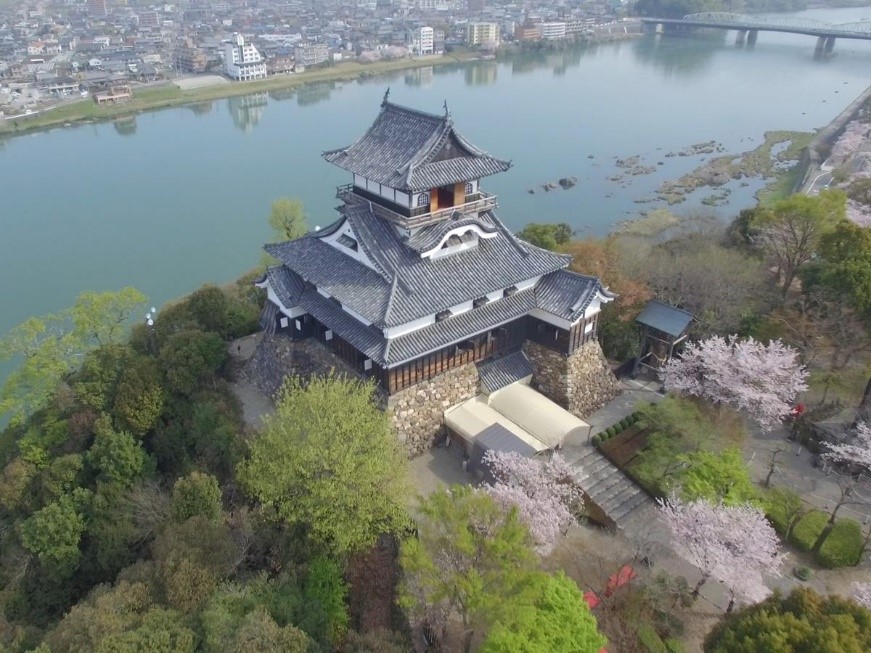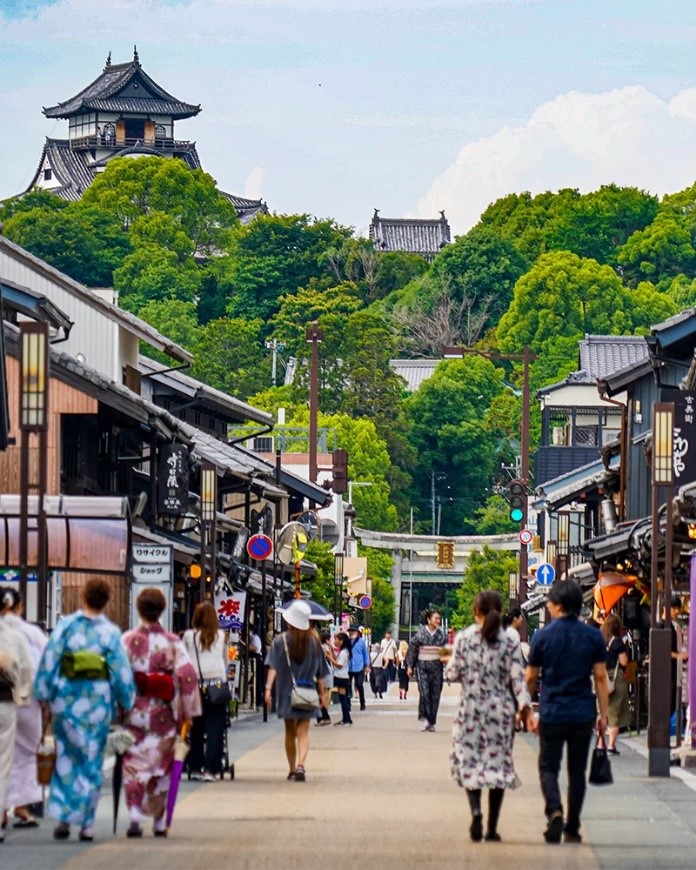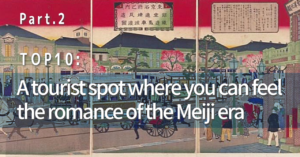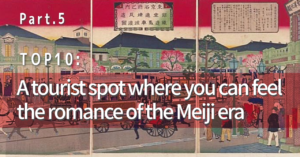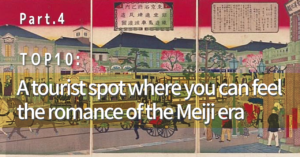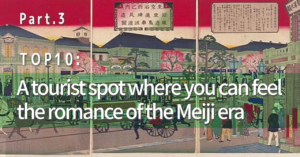Top 10:A tourist spot where you can feel the romance of the Meiji era Part.1
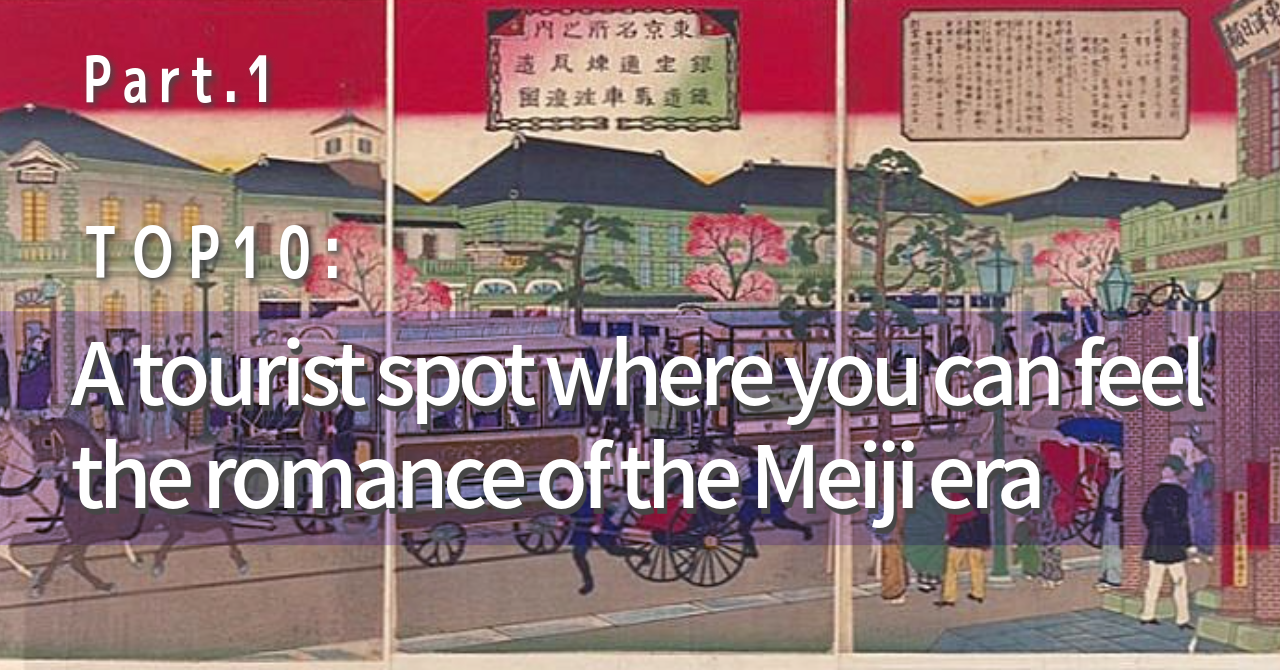
Starting April 2024, a new feature, “Ranking Japan Special,” will launch. This month, we’re focusing on the top 10 tourist destinations where you can experience Japan’s Meiji era. Japan is home to numerous historical sites, but our focus this time is specifically on the Meiji period.
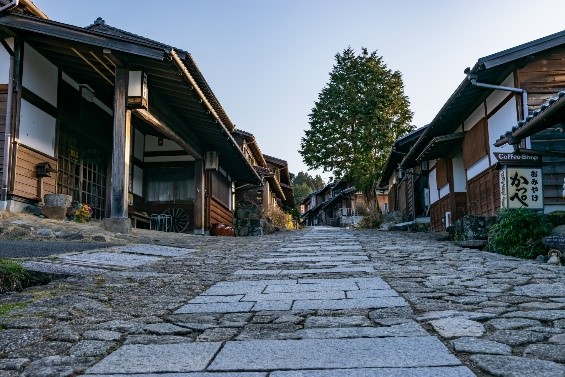
明治時代
The Meiji era (1868-1912)
Japan’s “Meiji Era” is the period in which the foundations of our modern life were laid. For example, it was during the Meiji Era that Japan saw its first electric lights and its first trains. It was also during this period that the standardization of days to 24 hours and years to 365 days was adopted. Children began attending elementary schools and adults began reading newspapers. Japan’s first elections and the establishment of the National Diet also took place during the Meiji era. Many of the “systems” and “ways of life” that we take for granted today originated in the Meiji era. The call to open the country was answered!
Prior to the beginning of the Meiji era, Japan had been in a long state of national seclusion known as “SAKOKU”. In 1853, however, the arrival of the “black ships” heralded Japan’s encounter with the world. During advancing Western powers in Asia, Japan embarked on the path to becoming a “modern nation-state” by adopting Western institutions and culture.
The pace of progress is astonishing. The postal system was established in the fourth year of Meiji, followed by the opening of the railroads, the beginning of elementary education, and the operation of the Tomioka Silk Mill in the fifth year of Meiji. The Freedom and People’s Rights Movement began in the seventh year of Meiji.
Despite the turmoil associated with rapid change, Japan flexibly embraced new Western values and ingeniously combined them with its own ancient traditions, achieving transformation at an unprecedented pace. This vibrant period of Japan’s “youth” is known as the Meiji Era.
*At TJM, we feature two types of ranking articles. One presents the latest rankings that are trending in Japan and around the world. The other type is based on research by TJM’s editors, who select candidates deemed worthy of ranking, and the actual ranking positions are determined by votes and submissions from readers who have visited the listed places, are planning to visit in the future, are interested in culinary experiences, have tasted the food, or, in the case of cultural experiences, have experienced or want to experience something similar. These articles are reader-voted, so you can have a say in the rankings. We invite you to participate and share your opinions!
Here’s our first feature. Within the long history of Japan, the Meiji era stands out as a period of great change. We have selected 10 places where you can experience the Meiji era. This week, we will introduce the first location. Starting next week, we will introduce two to three locations each week.
⓵Meiji Mura in Inuyama City
https://centrip-japan.com/spot/meijimura.html
Meiji Mura in Inuyama City, Aichi Prefecture, is an open-air museum that transports visitors back to the Meiji Era (1868-1912), a period of rapid modernization in Japan. Established in 1965, it showcases over 60 historical buildings, including the iconic Imperial Hotel designed by Frank Lloyd Wright. The village spans over 1 million square meters, offering a blend of Western and traditional Japanese architecture amid scenic views. Attractions like horse-drawn carriages and steam locomotive rides enhance the experience. Meiji Mura stands as a vivid reminder of Japan’s journey towards embracing modernity while preserving its rich cultural heritage.
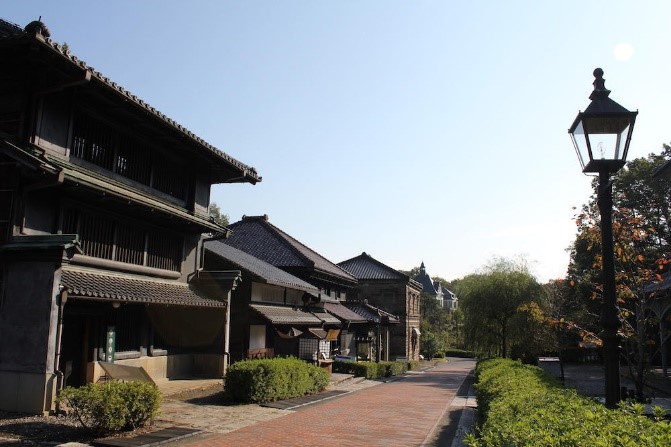
★Places to Visit in the Same Area
Inuyama Castle & Castle Town
Inuyama Castle, located in Aichi Prefecture, Japan, is one of the oldest surviving castles in the country, originally built in 1537. It is famous for its authentic wooden construction and beautiful, intricate architecture that exemplifies feudal Japan. The castle offers panoramic views of the Kiso River and the surrounding countryside. Adjacent to the castle is the castle town of Inuyama, which has retained much of its historic charm. The town features traditional streets lined with old merchant houses, tea houses, and small museums, offering visitors a glimpse into Japan’s rich cultural past.
